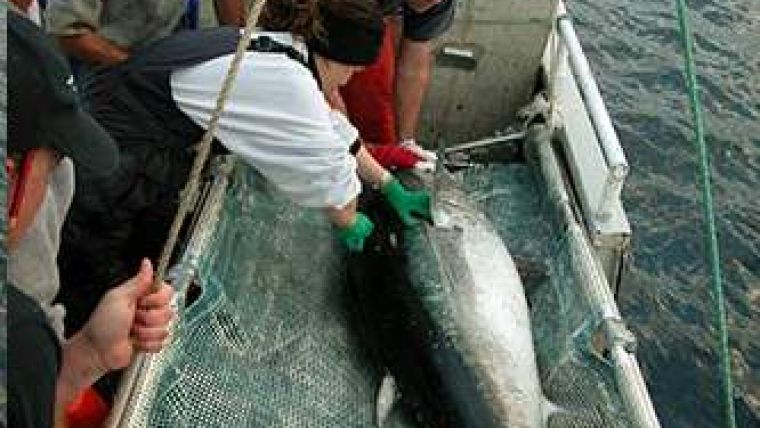Maritime Animal Mapping
CSIRO scientists from Australia have learned animal trekkiing quirks by fitting them with electronic recording and transmitting devices, setting them free, and studying the information they retrieve. King penguins in the Indian Ocean ride ocean currents to eddies rich with fish before making a bee-line back to their chicks. European eels navigate to ocean currents and make deep dives to dodge predators on their 5,000 kilometre migration from Ireland to Bermuda to breed.
More than 250 specialists in the use of telemetry devices (tags) to study animals meet in Hobart from 14-18 March at the Fourth International Science Symposium on Bio-logging (Bio-logging4).
This conference has attracted delegates from more than twenty nations. Presenters will outline their findings on species ranging from albatrosses and vultures, to whales, seals, tunas, turtles, crabs and sharks.
Bio-logging refers to the use of electronic recording devices to record the distribution, behaviour and physiology of animals. It helps scientists understand how species and populations use and move through habitats, their resource needs and their capacity to adapt to a changing environment. This is essential to guiding the management of biodiversity and living resources.
Bio-logging refers to the use of electronic recording devices to record the distribution, behaviour and physiology of animals.
Bio-logging tags differ according to the species and information required. They can be attached inside or outside animals and can record and transmit sound, light, temperature, water properties, speed, or even vision.
The information is relayed via satellite or retrieved direct from tags or recording stations and can help scientists understand how environmental conditions and climate affect animals, guide species conservation and create models for assessing animal populations, ecosystems, and approaches to management.
Research challenges include: expanding the lifetime and sensory capacities of tags; reducing their size; managing and analysing tag data; and, linking the physiology, behaviour and distribution of animals with environmental cues.
Keynote addresses will be given by:
Dr Christophe Guinet of the Centre d'Etude Biologique de Chizé-CNRS, France, who deploys oceanographic tags with oxygen sensors on southern elephant seals, and studies how killer whales and sperm whales interact with the Patagonian toothfish fishery.
Dr Uffe Høgsbro Thygesen of the Technical University of Denmark who develops statistical methods for analysing tagging and oceanographic data to better understand interactions between marine animals and their environment and how this might influence animal behaviour.
Dr Sasha Hooker of the University of St Andrews, United Kingdom, who studies animal diving behaviour, investigating interactions between animals and their environment to better identify and protect ocean areas of importance to marine animals.
Dr Graham Robertson of the Australian Antarctic Division who studies albatross and petrel species at risk of capture by longline fisheries and develops seabird-saving devices for the fishing industry.
Bio-logging4 is an initiative of CSIRO, the University of Tasmania and the Australian Antarctic Division. It will be opened by CSIRO Board Member The Hon John Kerin AM on 14th March. Trade displays will showcase the latest in bio-logging software and technology.














